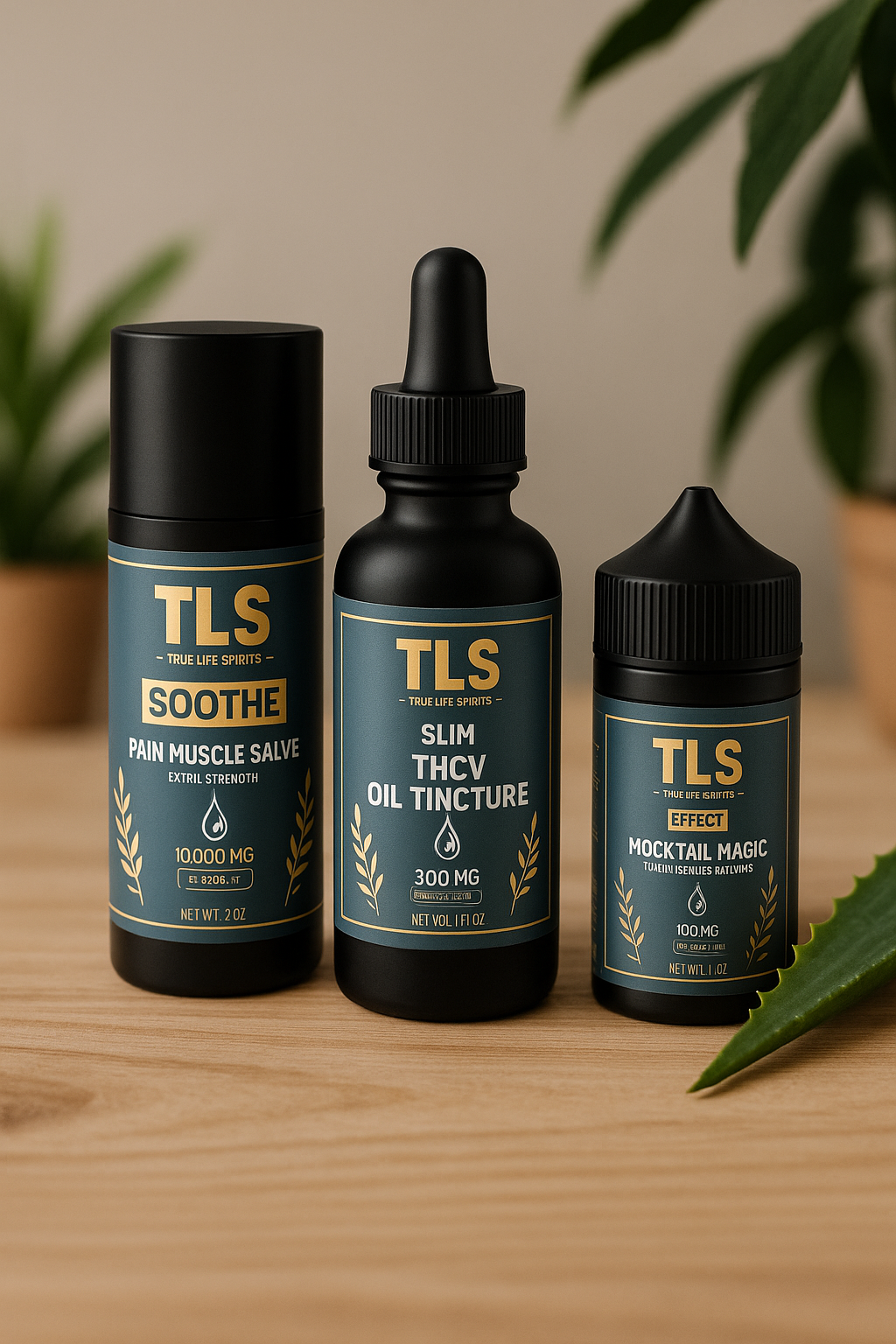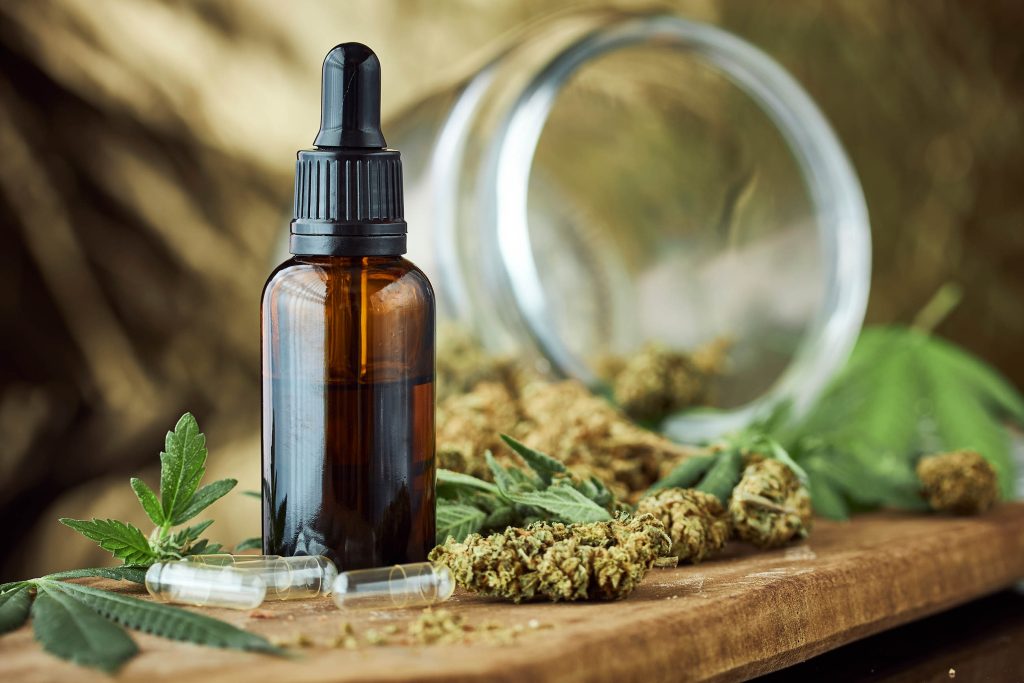Tetrahydrocannabivarin, or THCV, is emerging as a star in the cannabis world, captivating researchers and wellness enthusiasts alike with its unique properties. Unlike its more famous cousin, THC, THCV offers a range of potential benefits without the intense psychoactive effects, earning it nicknames like “diet weed” and “weederall.” Found naturally in certain cannabis strains, particularly African sativas like Durban Poison, THCV interacts with the body’s endocannabinoid system (ECS) in fascinating ways. This 1000-word exploration dives into the science-backed benefits of THCV, supported by facts and figures, to reveal why this minor cannabinoid is making major waves.
A Molecular Marvel: Understanding THCV’s Structure
THCV’s chemical makeup sets it apart from THC, despite their close relation. Structurally, THCV is a propyl analogue of THC, featuring a three-carbon side chain instead of THC’s five-carbon chain. This subtle difference, discovered as early as 1942 by Roger Adams, alters how THCV engages with cannabinoid receptors CB1 and CB2. At low doses, THCV acts as a CB1 antagonist, blocking receptor activity, while at higher doses, it can become a CB1 agonist, producing mild psychoactive effects. This biphasic nature—different effects at different doses—makes THCV a versatile compound. Studies, such as one published in 2023 in Cannabis and Cannabinoid Research, found that doses of 25–200 mg in humans elicited euphoria and enhanced focus, though less intensely than THC. THCV’s unique interaction with the ECS, including its ability to inhibit enzymes like fatty acid amide hydrolase, amplifies its therapeutic potential.
Appetite Control: The “Diet Weed” Phenomenon
One of THCV’s most celebrated benefits is its potential to suppress appetite, a stark contrast to THC’s munchie-inducing effects. Rodent studies, like a 2009 University of Aberdeen trial, demonstrated that THCV reduced food intake and weight gain by blocking CB1 receptors, which are known to stimulate hunger. This has sparked interest in THCV as a tool for weight management and obesity treatment. While human studies are limited, a 2016 Diabetes Care study involving 62 participants with type 2 diabetes found that 5 mg of THCV, taken twice daily for 13 weeks, showed no significant change in appetite or body weight compared to placebo. However, anecdotal reports and posts on platforms like X, such as one from @TheCannigma in 2025, highlight THCV’s growing popularity for appetite control. Researchers like Dr. Saoirse O’Sullivan note that while evidence is inconclusive, THCV’s CB1-blocking mechanism holds promise for future dietary applications.
Glycemic Guardian: THCV and Diabetes Management
THCV’s impact on blood sugar regulation is a beacon of hope for diabetes management. In the aforementioned 2016 Diabetes Care study, THCV at 10 mg daily improved fasting plasma glucose levels and pancreatic beta-cell function in type 2 diabetes patients. It also enhanced levels of adiponectin, a hormone linked to insulin sensitivity. A 2020 Journal of Cannabis Research review further underscored THCV’s ability to up-regulate energy metabolism and reduce insulin resistance in rodent models. Unlike THC, which is used for cachexia, THCV’s non-psychoactive profile at low doses makes it a safer candidate for long-term use. GW Pharmaceuticals has explored THCV (as GWP42004) alongside metformin for type 2 diabetes, indicating industry confidence in its potential. With 537 million adults globally living with diabetes in 2021, per the International Diabetes Federation, THCV could address a critical health crisis if further human trials confirm these findings.
Neuroprotection: Safeguarding the Brain
THCV’s neuroprotective properties are gaining attention for their potential in treating neurodegenerative disorders. Preclinical studies, including a 2020 Neurobiology of Disease article, showed that THCV reduced L-DOPA-induced dyskinesia in Parkinson’s disease models. Its antioxidant properties, noted in a 2016 British Journal of Pharmacology study, may delay Parkinson’s progression by mitigating neuroinflammation. THCV also activates 5-HT1A receptors, which could alleviate schizophrenia symptoms, as suggested in a 2015 Journal of Clinical Pharmacy and Therapeutics review. For Alzheimer’s, THCV, combined with THC, may reduce beta-amyloid plaque and inflammation, per a 2021 Journal of Cannabis Research study. With 55 million people worldwide living with dementia in 2020, according to the World Health Organization, THCV’s brain-boosting potential is a compelling area for research, though human trials remain sparse.
Anxiety and PTSD: A Calming Ally
THCV may offer relief for anxiety and post-traumatic stress disorder (PTSD) without the emotional flattening associated with traditional medications. A 2015 Journal of Clinical Pharmacy and Therapeutics study indicated that low doses of THCV reduced panic attacks in PTSD models without suppressing emotions, unlike benzodiazepines. By modulating THC’s psychoactive effects, THCV can shorten the duration of THC-induced anxiety, as noted in a 2016 Journal of Psychopharmacology trial where 10 mg of THCV mitigated THC’s cognitive impairments. Users report feeling energized and focused, aligning with THCV’s nickname “weederall.” A 2023 Cannabis and Cannabinoid Research study found that 25–200 mg doses improved digital vigilance test scores, suggesting enhanced mental clarity. With anxiety disorders affecting 301 million people globally in 2019, per the World Health Organization, THCV’s non-sedative, uplifting effects could redefine mental health treatment.
Bone Health and Beyond: Emerging Benefits
THCV’s benefits extend to bone health, with early research suggesting it stimulates bone growth. A 2015 Leafly article highlighted THCV’s potential for treating osteoporosis by promoting new bone cell formation. Its anti-inflammatory properties, detailed in a 2016 Pharmacological Research study, reduced nitrite production in macrophages, indicating broader applications for inflammatory conditions. THCV also shows promise in epilepsy management, with a 2013 British Journal of Pharmacology study noting its anticonvulsant effects in rat models. Additionally, a 2023 MDPI study found that THCV protected adipose-derived mesenchymal stem cells from endoplasmic reticulum stress, linked to obesity-related metabolic disorders. While these findings are preliminary, they underscore THCV’s versatility, with no major side effects reported in human trials up to 10 mg daily for 13 weeks, per Dr. O’Sullivan’s research.
The Road Ahead: Challenges and Opportunities
Despite its promise, THCV faces hurdles. Its scarcity in most cannabis strains—except African sativas like Malawi Gold—makes it costly to isolate, as noted by Jonathan Vaught, CEO of Front Range Biosciences. Human studies are limited, with most evidence derived from animal models or small trials, like the 2016 diabetes study with 62 participants. Regulatory barriers also persist, though the 2018 Farm Bill legalized hemp-derived THCV with less than 0.3% THC in the U.S. Posts on X, such as @tomangell’s 2025 report on THCV’s weight loss potential, reflect growing public interest. Future research must prioritize large-scale human trials to validate THCV’s efficacy and safety, potentially unlocking its role in mainstream medicine.
Embracing THCV: A Wellness Frontier
THCV stands at the cusp of a wellness revolution, offering appetite suppression, glycemic control, neuroprotection, and anxiety relief with minimal psychoactivity. Its biphasic effects and ECS interactions make it a unique cannabinoid, backed by studies showing improved glucose metabolism, reduced inflammation, and enhanced focus. While more research is needed, THCV’s potential to address global health challenges—obesity, diabetes, and neurodegeneration—is undeniable. As science catches up with this “diet weed,” THCV Tincture may redefine how we harness cannabis for health, inviting us to explore its benefits with curiosity and caution.
Reference:
1. Abioye, A., Ayodele, O., Marinkovic, A., Patidar, R., Akinwekomi, A., & Sanyaolu, A. (2020). Δ9-tetrahydrocannabivarin (thcv): a commentary on potential therapeutic benefit for the management of obesity and diabetes. Journal of Cannabis Research, 2(1). https://doi.org/10.1186/s42238-020-0016-7
2. Cascio, M., Zamberletti, E., Marini, P., Parolaro, D., & Pertwee, R. (2015). The phytocannabinoid, δ9‐tetrahydrocannabivarin, can act through 5‐ht1a receptors to produce antipsychotic effects. British Journal of Pharmacology, 172(5), 1305-1318. https://doi.org/10.1111/bph.13000
Gojani, E., Wang, B., Li, D., Kovalchuk, O., & Kovalchuk, I. (2023). Effect of thc, cbd, thcv, cbc and cbn cannabinoids on β-cells exposed to high glucose—high lipids.. https://doi.org/10.20944/preprints202309.0973.v1





Leave a comment
This site is protected by hCaptcha and the hCaptcha Privacy Policy and Terms of Service apply.